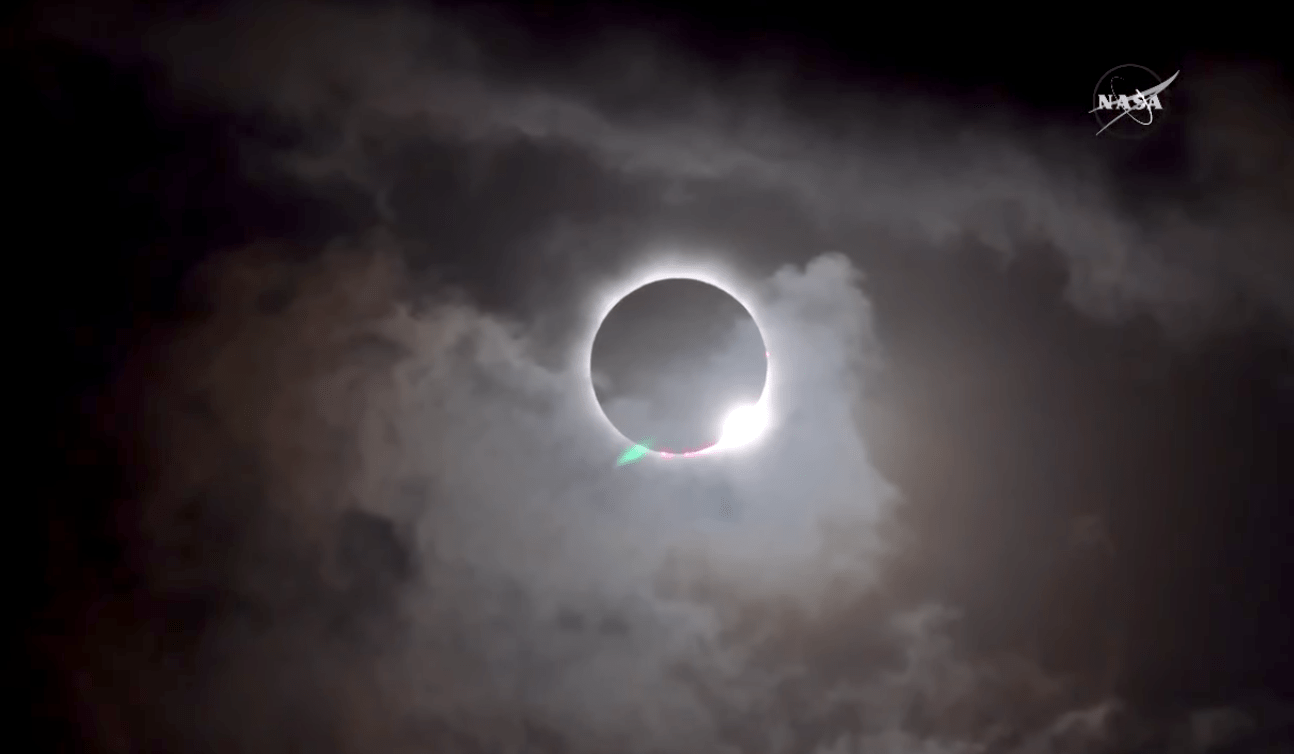The Total Solar Eclipse Is Upon Us! Watch It Here (Live Stream).
The much-anticipated, rare phenomenon is taking parts of the country by storm, affecting tourism, traffic and even the solar power grid. A file photo of a total solar eclipse. NASA's live streaming of Monday's event can be viewed below. (Screen shot / YouTube)
A file photo of a total solar eclipse. NASA's live streaming of Monday's event can be viewed below. (Screen shot / YouTube)
The much-anticipated total solar eclipse is finally taking place in a coast-to-coast swath across the mainland United States. It’s the first such celestial event here in 40 years, affecting everything from tourism to traffic to solar power facilities.
Thousands of people have traveled to parts of the country where the astronomical phenomenon will be at its peak (weather permitting), but for those of you who can’t make it to the “path of totality,” as the trail of the eclipse is called, you can watch NASA’s live coverage of the event, which officially begins about 9 a.m. PDT (12 p.m. EST).
Though you won’t need any special protective devices to watch on your screen, those stepping outside for viewing should check out some handy safety tips. Wired also put together some more information about how best to view the phenomenon, including advice about watching via smartphone.
And if you’re interested in how the solar power industry prepared for the impact the eclipse will have on the power grid, take a look at what CNBC reports:
Since the last total solar eclipse passed over part of the US in 1979, we’ve grown a lot more dependent on solar to electrify our homes and businesses. According to the Solar Energy Industries Association, solar energy has grown by an average of 68 percent per year in the past decade. The country now has about 45 gigawatts of solar capacity installed, with 260,000 Americans employed in the industry.
The solar eclipse will significantly diminish that capacity for a couple of hours on August 21, especially in California and North Carolina.
“Our solar plants are going to lose over half of their ability to generate electricity during the two to two and a half hours that the eclipse will be impacting our area,” says Steven Greenlee, spokesperson for the California Independent System Operator, or CAISO, one of the largest independent grid operators in the world. …
The federal Energy Information Administration expects 1,900 utility-scale solar photovoltaic (PV) power plants in all will be affected.
The North American Electric Reliability Corporation (NERC) says it doesn’t expect the eclipse to create reliability issues for the bulk power system. Still, the eclipse will test the reliability of solar generation on a national scale, and challenge the preparedness of operators like CAISO.
Truthdig contributor Juan Cole, who often writes about green energy, also riffed on an eclipse-related tweet by scientist Neil Degrasse Tyson pointing out that the same science that provides information about the solar eclipse is behind climate change research. Read Cole’s piece “Why Are There No Eclipse Deniers?” by clicking on this hyperlink.
So pull up a lawn chair and enjoy the show—that is, if you get more time off work to do so than McDonald’s employees are getting.
Your support matters…Independent journalism is under threat and overshadowed by heavily funded mainstream media.
You can help level the playing field. Become a member.
Your tax-deductible contribution keeps us digging beneath the headlines to give you thought-provoking, investigative reporting and analysis that unearths what's really happening- without compromise.
Give today to support our courageous, independent journalists.






You need to be a supporter to comment.
There are currently no responses to this article.
Be the first to respond.